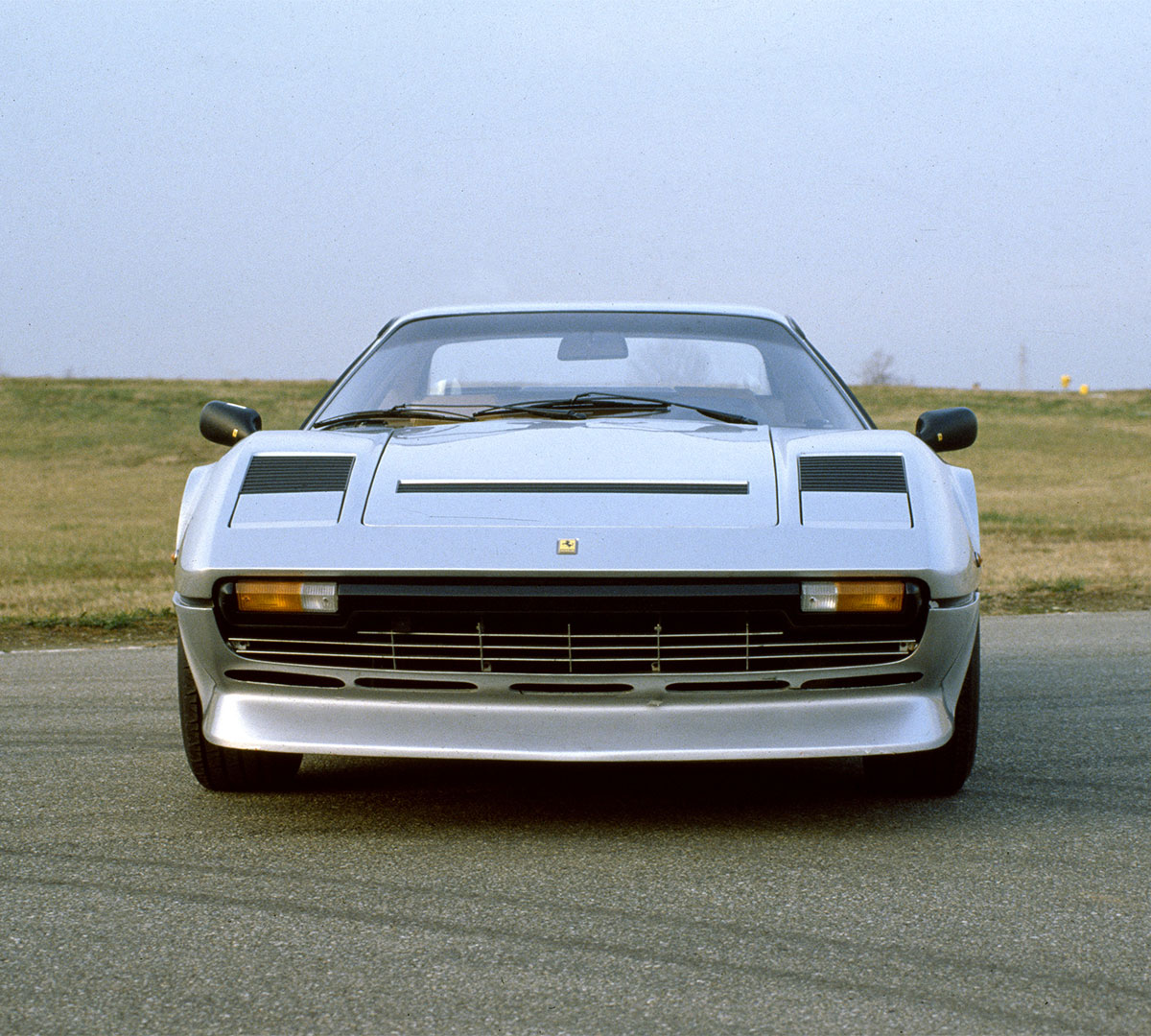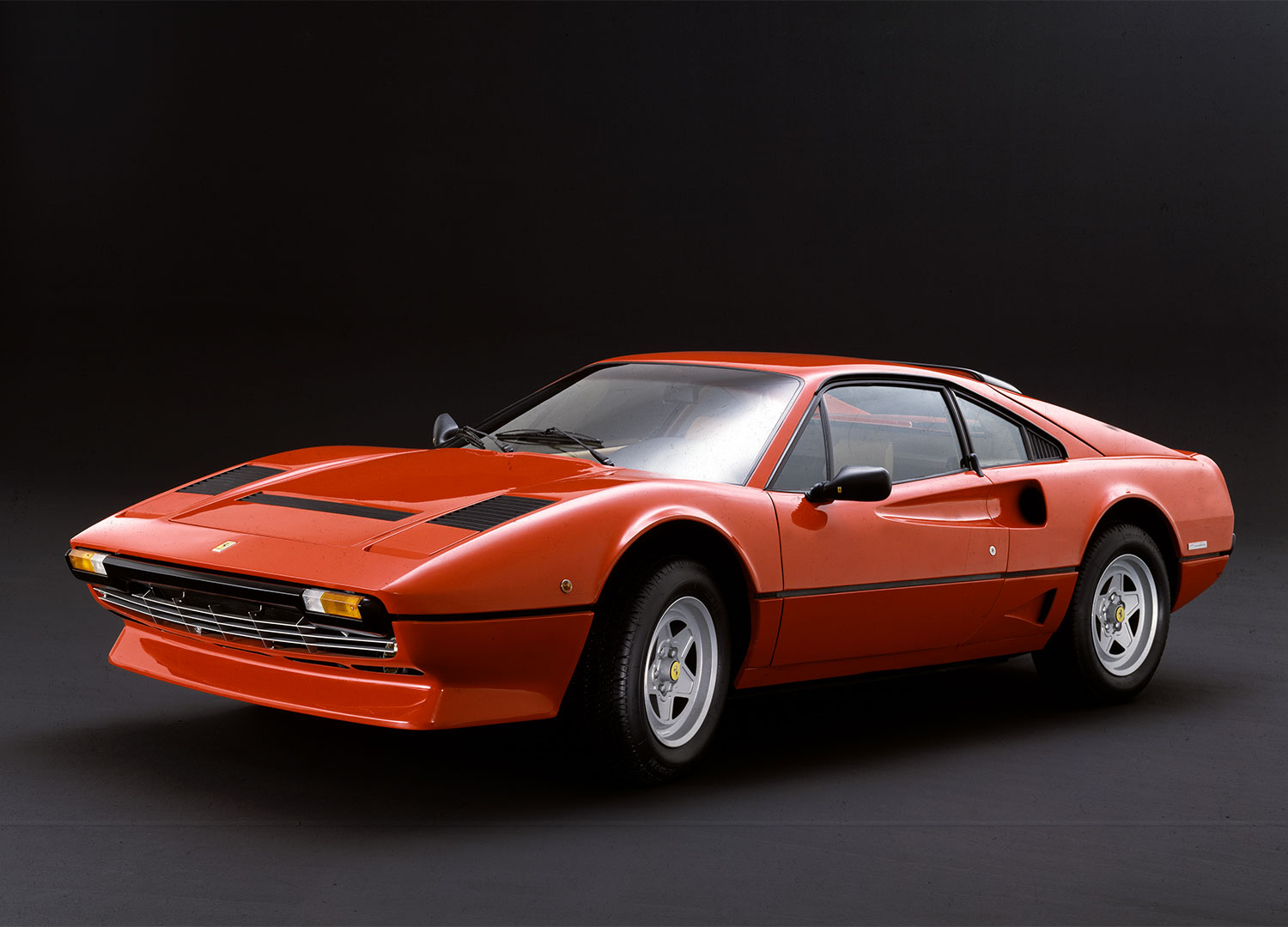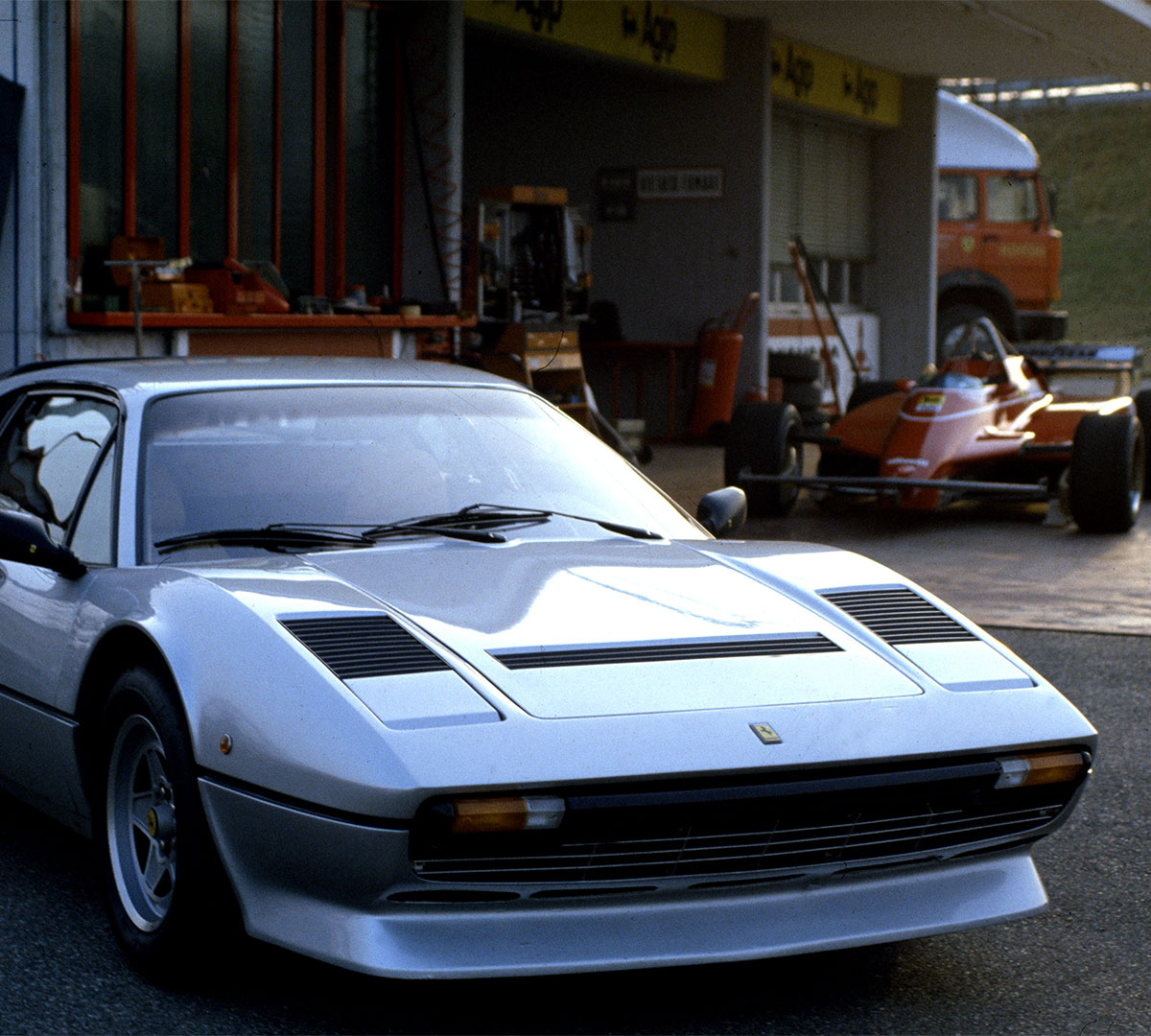?width=1920&height=1600)
Ferrari 208 GTB Turbo
Turbo-charging had taken a strong foothold in Formula 1 racing and the experience gained on the tracks soon made the leap to production with the 208 GTB Turbo, unveiled at the 1982 Turin Motor Show. The 2,000 cc V8 was given a considerable injection of power that radically transformed its whole character, lending the kind of superb acceleration normally unthinkable in a car of this displacement.

Deep front spoiler
With turbocharging prevalent in Formula 1 at the time, Ferrari decided to adopt it on the Italian market 208 GTB in 1982, to redress the power difference between the 2 litre and 3 litre engines, without increasing the tax burden on the client.

Visually the changes to the Pininfarina designed body were very small, there was a deep front spoiler with a row of five horizontal cooling slots just below the radiator grille and the front lid featured a row of satin black finished louvres to increase airflow through the radiator, due to the higher temperatures created by the turbocharging of the engine.
On the lower body sides just in front of each rear wheel arch there was a NACA duct, and a spoiler was fitted to the rear of the roof between the buttresses that ran into the rear wings. The tail of the car featured a badge proclaiming “Turbo” and the twin paired exhaust pipes were within shrouds. Pirelli P 7 tyres on 16” rims were available as an option to the standard metric Michelin TRX tyres.

As with the exterior the interior was virtually identical to the larger capacity 308 GTB model, featuring a pair of leather trimmed bucket seats, whilst the main instruments were contained in a hooded nacelle in front of the driver, who was provided with a three spoke leather rimmed steering wheel.
The clock and oil temperature gauge were mounted in a separate panel on the lower left edge of the dashboard. The gear lever in an open gate was mounted in the driver’s side of the centre console, which also contained ancillary switchgear, the handbrake and an ashtray.
A GTS version with a removable Targa top was also available.


The chassis and the engine
The 208 GTB Turbo models had a tubular chassis with factory type reference F 106 DB 100. Disc brakes, with independent suspension via wishbones, coil springs, and hydraulic shock absorbers, were provided all round, with front and rear anti roll bars. All models were numbered in the Ferrari odd number road car chassis sequence, with only left hand drive available. Production ran from 1982 through to 1985, during which time 437 examples were produced in the chassis number range 41357 to 59277.

The transversely mid-mounted aluminium V8 engine was essentially of the same design as that used in the 208 GTB model. It was of a 90 degree configuration, with belt driven twin overhead camshafts per bank, having a total capacity of 1991cc, with a bore and stroke of 66.8mm x 71mm, and a compression ratio of 7:1, bearing factory type reference F 106 D 000.

The engine was coupled in unit with the all synchromesh five speed transmission assembly, which was below, and to the rear of the engine’s sump. It was fitted with an exhaust driven KKK turbocharger unit with waste gate, Bosch K Jetronic fuel injection and Marelli MED 804A electronic ignition, and had a claimed power output of 220bhp at 7000rpm.

- V8ENGINE
- 1990.64 ccTOTAL DISPLACEMENT
- 162 kWMAXIMUM POWER @ at 7000 rpm
- 242 km/hTOP SPEED
- Typerear, transverse, 90° V8
- Bore/stroke66.8 x 71mm
- Unitary displacement248.83cc
- Total displacement1990.64cc
- Compression ratio7 : 1
- Maximum power162 kW (220 hp) at 7000 rpm
- Power per litre111hp/l
- Maximum torque240 Nm (24.5 kgm) at 4800 rpm
- Valve actuationtwin overhead camshafts per bank, two valves per cylinder
- Fuel feedBosch K-Jetronic injection, single turbo
- Ignitionelectronic, single spark plug per cylinder
- Lubricationwet sump
- Clutchsingle-plate
- Frametubular steel
- Front suspensionindependent, unequal-length wishbones, coil springs over telescopic shock absorbers, anti-roll bar
- Rear suspensionindependent, unequal-length wishbones, coil springs over telescopic shock absorbers, anti-roll bar
- Brakesdiscs
- Transmission5-speed + reverse
- SteeringRack-and-pinion
- Fuel tankcapacity 74litres
- Front tyres205/55 VR 16
- Rear tyres225/50 VR 16
- Typetwo-seater berlinetta
- Length4230mm
- Width1720mm
- Height1120mm
- Wheelbase2340mm
- Front track1460mm
- Rear track1460mm
- Weight1232kg (dry)
- Top speed242km/h
- Acceleration 0-100 km/h-
- 0-400 m-
- 0-1000 m-
- design
- chassis and engine
- Technical Details